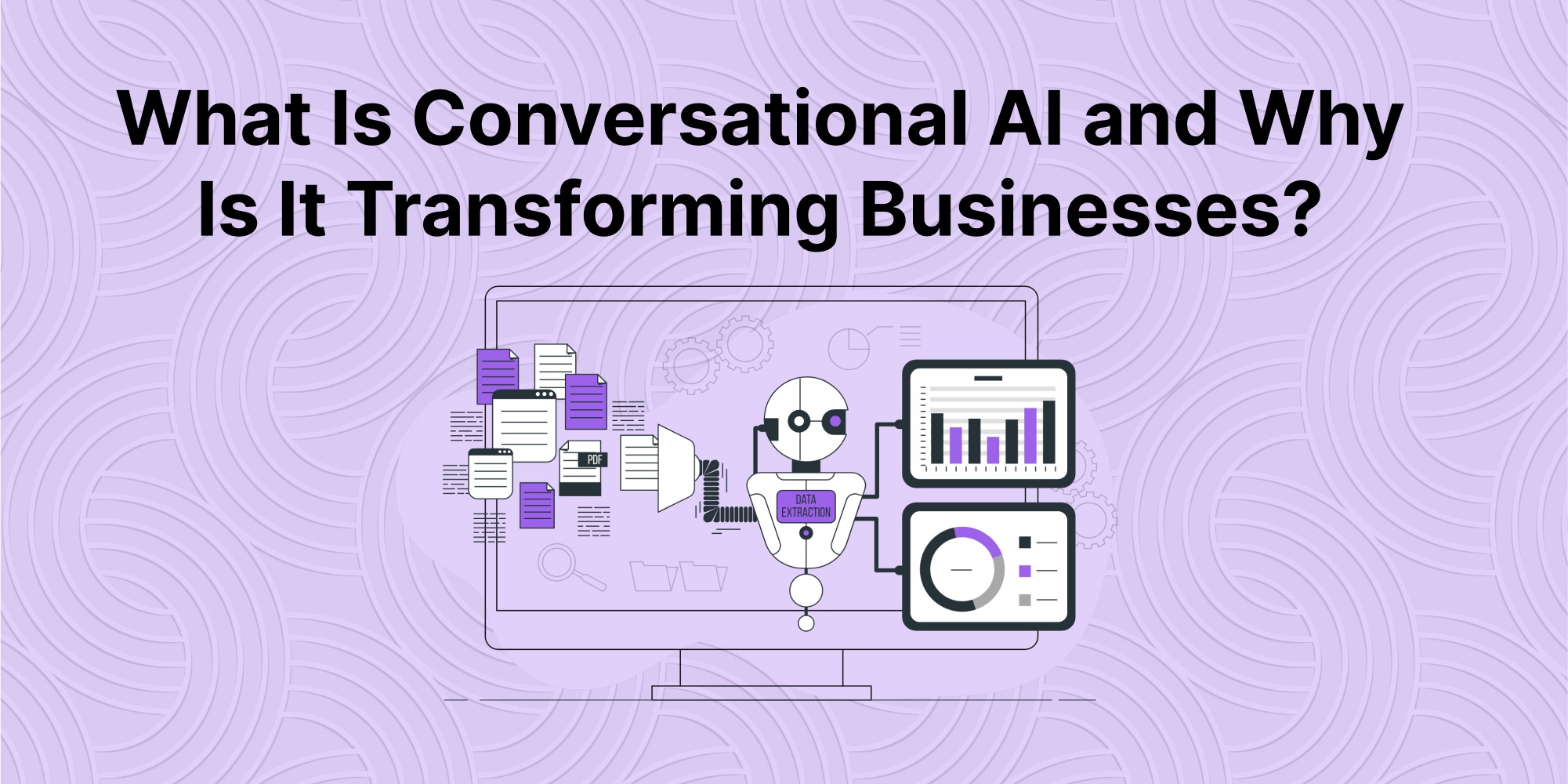Introduction
In the digital age, meeting customer expectations isn’t enough—businesses must exceed them. Conversational AI is at the forefront of this revolution, combining natural language processing (NLP), machine learning (ML), and speech technologies to drive intelligent, human-like interactions. From virtual assistants to smart chatbots, it’s reshaping marketing, support, operations, and more.
This in-depth blog explores:
- What Conversational AI is
- Its key technologies
- Business benefits
- Use cases by industry
- Implementation strategies
- Future trends
1. What Is Conversational AI?
Conversational AI is a branch of artificial intelligence that enables computers to understand and simulate human conversation—through text or speech—with natural understanding and context.
Key Components:
- Natural Language Processing (NLP): Parses user input.
- Natural Language Understanding (NLU): Identifies intent and entities.
- Machine Learning (ML): Learns from interactions to improve.
- Natural Language Generation (NLG): Crafts coherent responses.
- Speech-to-Text & Text-to-Speech: Enables voice-based conversation.
Unlike scripted chatbots, Conversational AI evolves—learning how language is used, recognizing context, and generating more natural responses over time Master of Code Global+12kommunicate.io+12Inclusion Cloud+12NextivaDevRev.
2. How Conversational AI Works
The process unfolds in five stages :
- Input Processing: Receive text or voice input.
- Speech Recognition (for voice): Converts speech to text.
- Intent & Entity Recognition: NLU extracts meaning.
- Dialogue Management: Contextual reasoning decides next action.
- Response Generation: NLG forms the response, optionally converted to speech.
ML continually refines each stage to enhance accuracy and relevance.
3. Why Businesses Are Adopting Conversational AI
a. 24/7 Customer Support & Faster Response Times
AI agents deliver instant responses and handle simultaneous requests.
Organizations report reduced wait times and improved satisfaction DevRev+1convin.ai+1Business Insiderconvin.ai.
b. Significant Cost Savings
Conversational AI reduces staffing costs and training needs, especially for SMEs IBM.
c. Scalability & Efficiency
Bots manage unlimited concurrent chats, scaling effortlessly with demand Capacity.
d. Personalization & Context Awareness
AI remembers preferences, transaction history, and sentiment to tailor interactions .
e. Multilingual Support
Conversational AI supports many languages, expanding global reach and accessibility .
f. Real-Time Data & Insights
AI captures conversation analytics—intent patterns, sentiment, resolution statistics—driving strategic improvements Master of Code Global+2smith.ai+2Capacity+2.
g. Revenue Conversion & Sales Acceleration
AI-guided chat can suggest products and assist through checkout, boosting conversions .
4. Industry Use Cases
🛍️ Retail & E-commerce
- Virtual Assistants: Guiding users through product selection, answering questions.
- Recommendation Engines: Suggesting shipping updates or related products.
- Chatbots resolve 60% of requests, freeing human agents for complex queries .
- Case Study: Pizza My Heart’s “Jimmy the Surfer” chatbot boosted sales efficiency WIRED.
🏦 Banking & Finance
- Automates account inquiries, transaction history, loan eligibility, fraud alerts.
- Case Study: Commonwealth Bank deployed AI chat handling 50k daily inquiries The Australian.
🏥 Healthcare
- Enables symptom triage, appointment bookings, medication reminders, FAQs.
✈️ Travel & Hospitality
- Manages bookings, cancellations, rescheduling, flight updates, multilingual support.
📞 Telecommunications
- Troubleshoots service outages, activation workflows, plan changes with escalation when needed.
🏢 Other Business Applications
- Internal HR tools for employee leave, policy queries, onboarding.
- Agentic AI: Automates actions at scale via intelligent agents, not just responses Capacity+1The Australian+1Gupshup+1Nextiva+1IBM+13Business Insider+13CX Today+13.
5. Benefits: Metrics & Business Value
| Benefit | Key Gains |
|---|---|
| Cost Reduction | Lower staffing and training expenditure DevRev+3IBM+3wsj.com+3 |
| Enhanced Customer Experience | 24/7 support, faster response, personalization |
| Scalability | Bots handle peak demand without extra costs |
| Revenue Growth | Higher conversions via AI-guided sales funnels |
| Operational Insights | Real-time analytics enhance decision-making |
| Brand Consistency | Consistent service quality across channels |
6. Common Implementation Steps
- Define Goals: E.g. support, sales, internal operations improvement.
- Compile FAQ & User Scenarios: Source intents from support tickets and user queries.
- Choose Platform: Options include Google Dialogflow, IBM Watson, Microsoft Bot Framework, Amazon Lex, Yellow.ai, Aisera Gupshup+4CX Today+4convin.ai+4.
- Design Conversational Flows: Map out conversation tree, fallback options, escalation triggers.
- Integrate Systems: Link to CRM, inventory, booking engines, CMS.
- Train & Test: Use real interactions and adjust NLP models.
- Launch & Monitor: Roll out initial version; track metrics and refine flows.
- Continuous Improvement: Leverage new data for ongoing NLP & intent tuning convin.aiDevRev.
7. Challenges & Mitigation Strategies
- Language Ambiguities: Use hybrid rules+ML approaches, test extensively.
- Complex Queries: Route to human agents when needed; design clear escalation.
- Data Privacy: Enforce strong encryption, compliance (GDPR, etc.).
- User Trust and UX: Transparently label bots and match tone to brand.
- Knowledge Updating: Automate sync with knowledge base or CMS kommunicate.io.
8. Future Trends in Conversational AI
• Agentic AI
Autonomous agents that reason and initiate tasks independently CX Today.
• Multi-Agent Ecosystems
Multiple specialized bots working in concert across touchpoints.
• Empathetic and Contextual AI
Advanced emotion detection and mood-aware responses.
Microsoft’s Mustafa Suleyman predicts conversational AI will become as foundational as web browsers Route Mobile+5theverge.com+5DevRev+5.
• Vibe Coding & AI Productivity
AI-generated conversational scripts and flows will be built by non-developers .
• Employee-Facing Bots
Internal bots to streamline HR, knowledge retrieval, IT support.
9. Success Blueprint for connverz.com
At connverz.com, you can launch world-class conversational AI solutions:
- Audit: Analyze current customer pain points and support volume.
- Select Platform: Choose tech that fits your scale and integration needs.
- Pilot Project: Start with FAQs or sales guidance bot.
- Train & Iterate: Use real data to improve accuracy.
- Scale Across Teams: Add multilingual, voice, and internal support bots.
10. Conclusion
Conversational AI is more than a tech upgrade—it’s a transformational business asset. It empowers 24/7 support, cost savings, better engagement, and actionable insights. As the technology advances—moving toward agentic, empathetic, and autonomous AI—businesses must act now.
Want to explore how conversational AI can elevate connverz.com? Contact us or download our Conversational AI Starter Guide today!
Let’s Kickstart Your Conversational AI Journey
➡️ Learn more: https://connverz.com/conversational-ai
➡️ Share your story with our team: https://connverz.com/contact
➡️ See success in action: https://connverz.com/case-studies
Join the conversation. Transform your business. With connverz.


